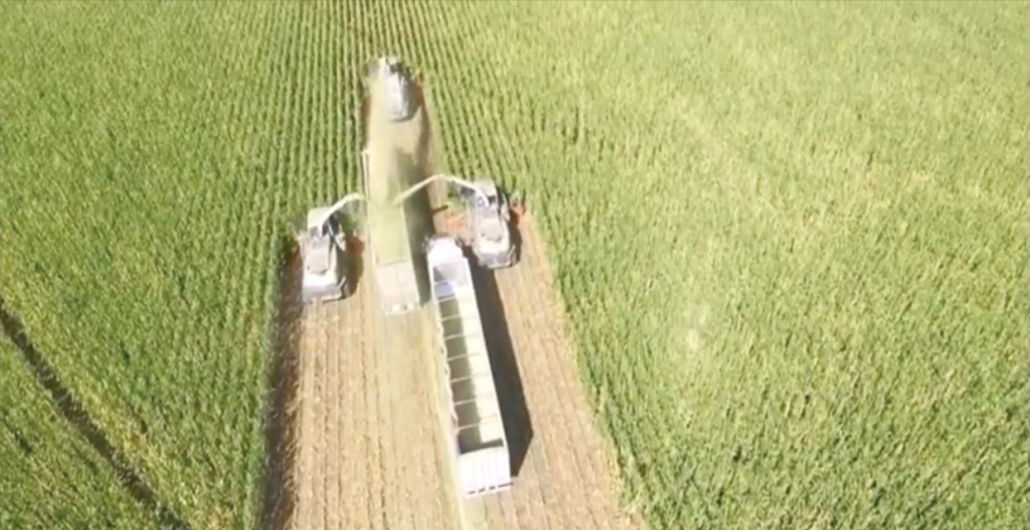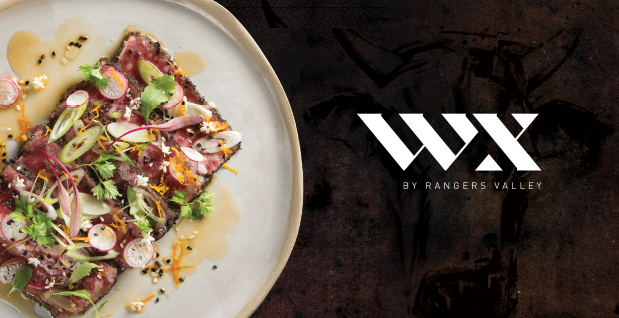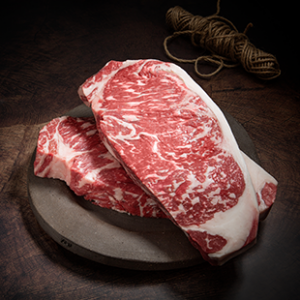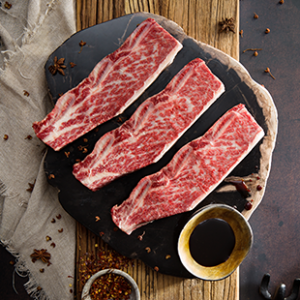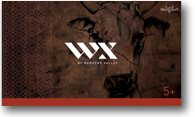3 Foolproof Ways to Cook a Tomahawk
Whether you’re a chef or a committed foodie, the Tomahawk is a culinary challenge not for the faint hearted. And with good reason. It’s an enormous, premium cut of meat you’ve invested a great deal in and it’s primed for great things.
To ensure you get the best from this awesome cut and don’t crumble under the pressure to perform, we’ve compiled a step-by-step guide with three techniques depending on your individual kitchen set up.
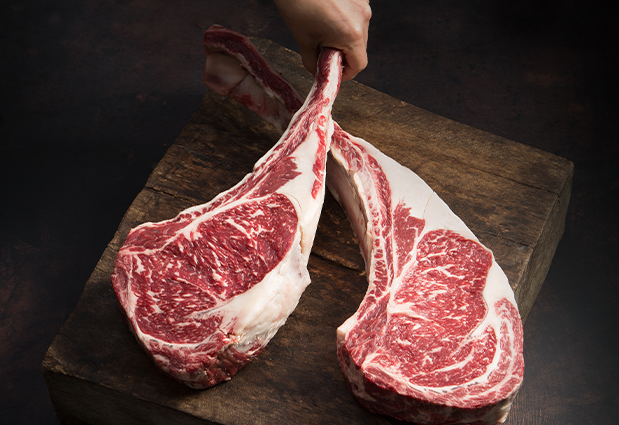
Image: WX by Rangers Valley, Wagyu Cross Tomahawk by Red Candy
But firstly, what is a Tomahawk?
Apart from its rapid rise to rock star status in the world of beef, the Tomahawk is simply an on-the-bone Rib eye with most of the rib bone left intact. It’s this rib bone that gives it its name as it resembles the Native American throwing axe, the tomahawk. And it’s this 30cm bone that makes the cut so awe inspiring.
Tomahawks are BIG… between 1.2-2kg and they’re designed to share between 2-6 people depending on the size. It’s the sheer size and awkwardness of these steaks that can strike fear into the most confident cook.
As for the meat on this glorious cut, it’s a bone-in rib eye, so you can expect large amounts of inter-muscular fat, making it a full flavoured, melt-in-the-mouth experience that not only backs up the Tomahawk’s appearance, but raises the delicious drama filled bar.
So how do you cook this theatrical beast?
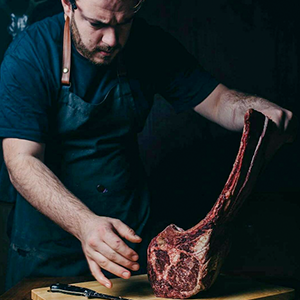
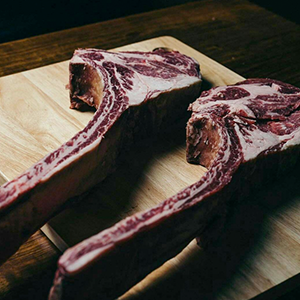
Images: Rangers Valley 1.2kg tomahawk. Courtesy of @meat_maiden
The Preparation
Regardless of which technique you choose, begin by always following these simple prep steps:
- If your Tomahawk is frozen, refrigerate it for 2-3 days to allow it to slowly defrost.
- Remove it from its packaging, pat dry with paper towel and allow to come to room temperature.
- Season, season, season. Liberally season all sides of the steak with salt and pepper just before you cook it.
BBQ – Sear
Using a BBQ is a great way to cook your Tomahawk if you have limited oven space.
Pre-heat the BBQ to hot. Sear the steak on all sides, including the thick edge. Lower the temperature to medium, close the hood and cook for 15-20 minutes. Always check the internal temperature using a meat thermometer to ensure you get the degree of doneness you’re after. See below for our reference guide of when to pull it off the grill. Let rest in a warm place covered loosely with foil for 15 minutes.
BBQ – Reverse Sear
Another approach using the BBQ is the reverse sear. This technique cooks the steak low and slow to begin and finishes with a sizzling sear.
Turn only one side of your BBQ grill on. Place your Tomahawk on the cold side of the grill, keeping it as far away from the heat as possible. Flip your steak every 5 minutes, flipping end to end and side to side for an even cook.
When the internal temperature is 50oC, pull it off the heat and cover with foil for 15 minutes.
Light the second side of your BBQ grill and set the temperature to HOT. Place the steak over the hot grill turning after 1-2 minutes and sear the other side. Then, hold the fat side over the grill to sear as well. If you haven’t achieved the sear you’d like at this point, you can sear each side again for another 30 seconds. There’s no need to rest again with this method, so pull it off the grill, slice and enjoy!
Sous Vide
If you have access to a water bath, then this is a great way to ensure a tender, evenly cooked steak with an incredible crust.
Heat a sous vide water bath to 53°C. Seal the tomahawk in an individual vacuum-sealed bag and place in the water bath with the lid down. Allow to cook slowly for 1-3 hours.
Remove the tomahawk from the bag and pat dry with paper towel. Heat a large cast iron pan over a super high heat, add vegetable oil and butter and when the butter begins to brown, add the steak. Sear for 30 seconds-1 minute then flip and do the same on the other side. Hold the steak with tongs and sear the fat side and all around the edges until they’re crisp. Rest on a wire rack for 5 minutes, carve and serve.
Doneness
Whatever you do, don’t risk it by guessing the doneness of your Tomahawk. Use a meat thermometer to check the internal temperature. Below is a guide for internal temperatures for when they should be pulled off the grill and their final rested temperature.
|
Rare |
Med Rare | Medium | Med Well | Well Done | |
| Pull Temp |
50-55oC |
55-60oC | 60-65oC | 65-70 oC |
70 oC |
|
Final Temp |
60 oC | 60-65 oC | 65-70 oC | 70 oC |
75oC+ |
Serving
It’s all about the drama with a Tomahawk so have fun with it. Carry it to the table, hold the bone with one hand and slice along its length to remove the meat from the bone. Then slice the meat across the grain into thick slices. Season with salt and pepper and serve with lashings of chimichurri or the more traditional béarnaise with fries.
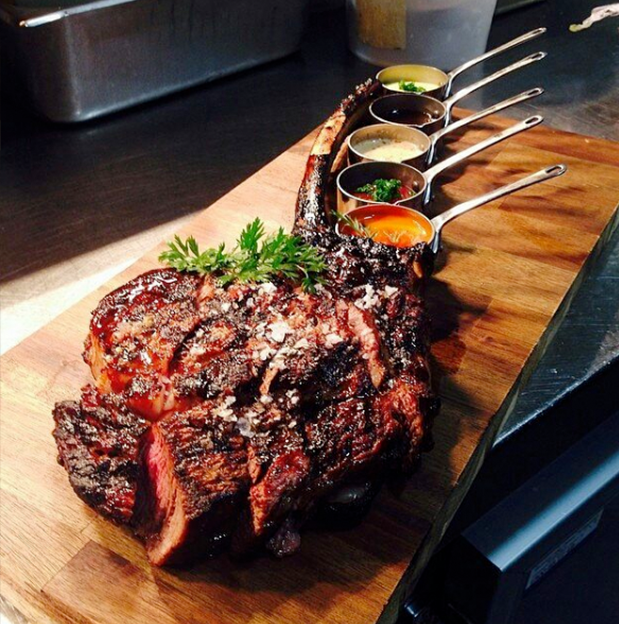
Image: Rangers Valley tomahawk. Courtesy of @chefjoshuamason
For more information about Rangers Valley brands, or to learn more about the Rangers Valley story, visit www.rangersvalley.com.au.

